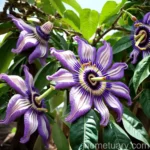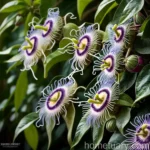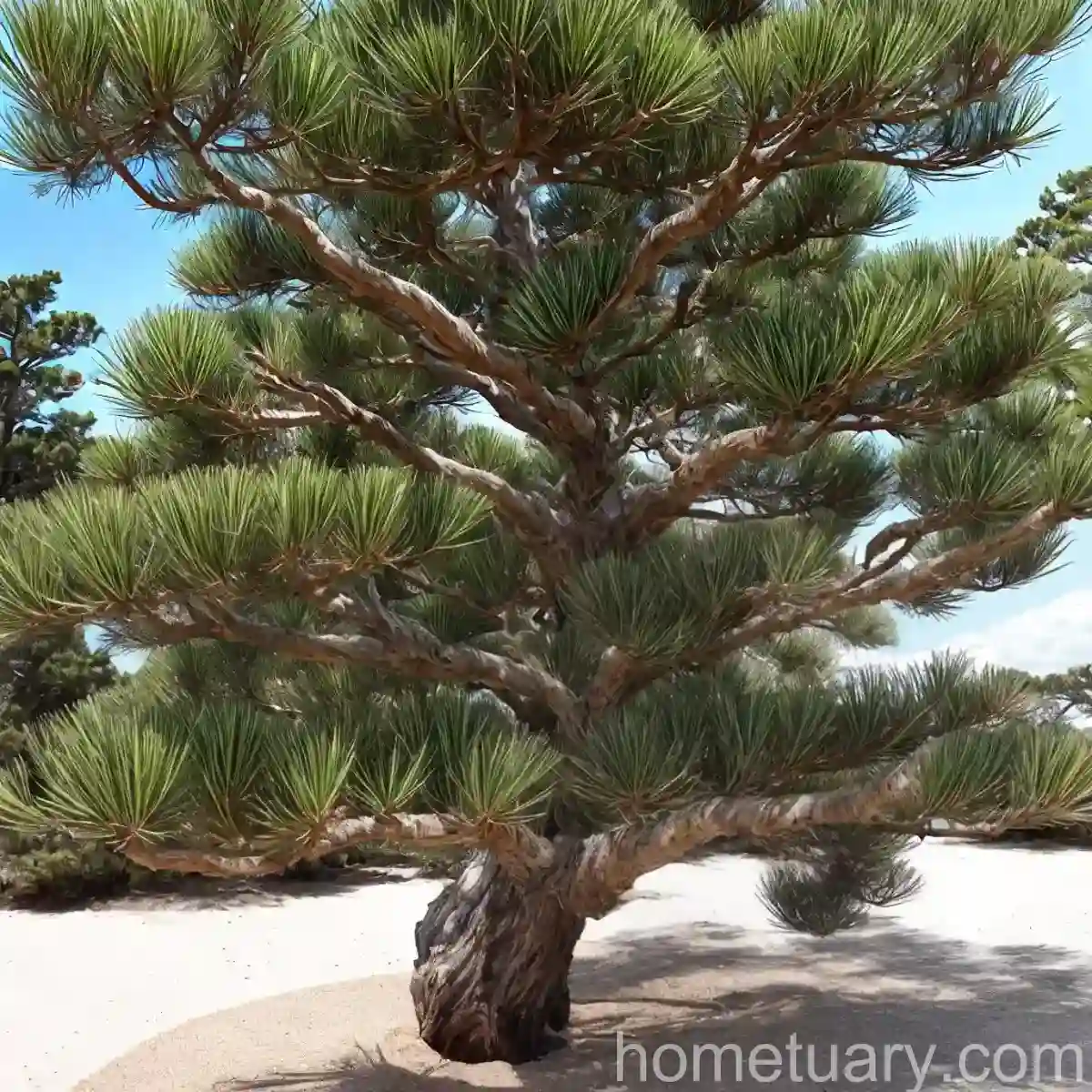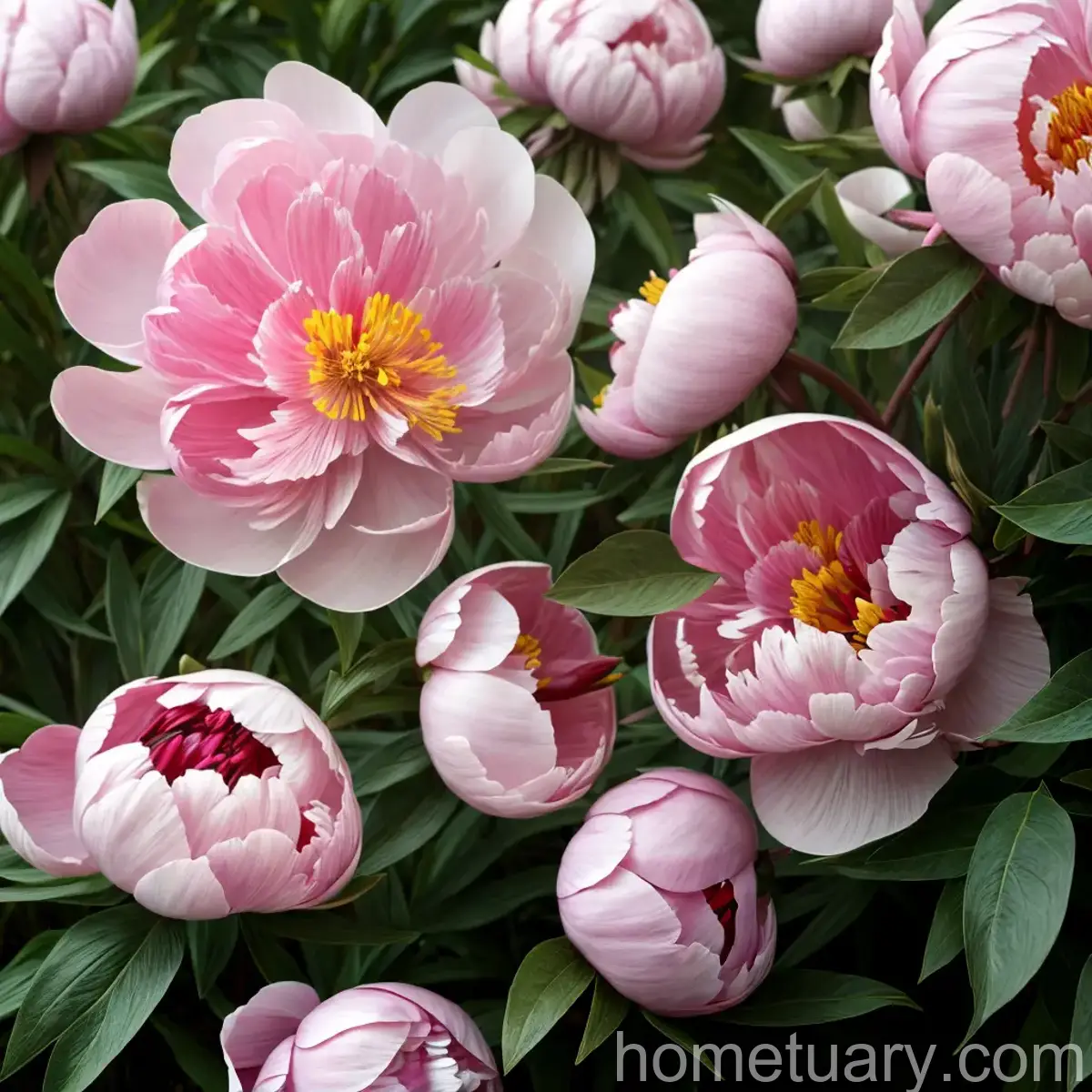Purple Passionflower (Passiflora incarnata): A Complete Guide
Plants have long been known for their therapeutic properties, and the purple passionflower (Passiflora incarnata) is no exception. This beautiful vine is not only valued for its stunning blooms but also for its medicinal and calming effects. In this comprehensive guide, we will delve into every aspect of the purple passionflower, from its cultivation and care to its uses and benefits.
What is Purple Passionflower (Passiflora incarnata)?
The purple passionflower, scientifically known as Passiflora incarnata, is a perennial vine that belongs to the Passifloraceae family. This captivating plant is native to the southeastern United States but has also been naturalized in many other regions across the globe, including Europe and Asia. Its unique and intricate flowers make it a popular choice for ornamental gardens, while its medicinal properties have earned it a place in traditional herbal remedies.
Key Takeaways
Before we dive into the specifics, let’s take a quick look at the key takeaways of the purple passionflower:
- Botanical Name: Passiflora incarnata
- Common Name: Purple Passionflower
- Family: Passifloraceae
- Type: Perennial Vine
- Uses: Medicinal, Ornamental
- Native Habitat: Southeastern United States
- Key Features: Intricate purple and white flowers, edible fruit
Now that we have a brief overview of the purple passionflower, let’s explore how to successfully cultivate and care for this enchanting plant.
Cultivation
Cultivating purple passionflower requires attention to several key factors, including water, sunlight, soil, and fertilizer. By providing the right conditions, you can ensure optimal growth and blooming, ultimately reaping the benefits of this remarkable plant.
Water
Proper watering is essential for the health and vigor of purple passionflowers. However, they generally prefer well-draining soil and do not tolerate waterlogged conditions. It is important to strike a balance to prevent both under-watering and over-watering, as these can lead to issues such as root rot and poor flowering.
Watering Tips:
– Frequency: Water deeply once a week, ensuring that the soil dries out slightly between waterings.
– Avoid Overhead Irrigation: Direct water at the base of the plant to prevent excessive moisture on the leaves, which can lead to fungal diseases.
Sunlight
Purple passionflowers thrive in full sunlight, but they can also tolerate partial shade. However, in areas with hot summers, providing partial shade during the hottest part of the day can help prevent stress and sunburn on the foliage.
Sunlight Requirements:
– Ideal Conditions: 6-8 hours of direct sunlight per day.
– Shade Tolerance: Can tolerate partial shade, especially in regions with intense sunlight.
Fertilizer
Applying a balanced fertilizer can significantly enhance the growth and blooming of purple passionflowers. A fertilizer specifically formulated for flowering vines can provide the necessary nutrients for robust growth and prolific flowering.
Fertilizing Guidelines:
– Timing: Apply a balanced fertilizer in early spring before the onset of active growth.
– Frequency: Repeat the application every 4-6 weeks during the growing season.
– Type: Consider using a fertilizer with a higher phosphorus content to promote blooming.
Soil
The soil in which purple passionflowers are planted plays a crucial role in their overall health and performance. A well-draining and nutrient-rich soil mix is essential for promoting vigorous growth and abundant blooms.
Soil Requirements:
– Texture: Well-draining with a loamy texture.
– pH: Slightly acidic to neutral (pH 6.0 – 7.0).
– Amendments: Incorporate organic matter such as compost to improve soil structure and fertility.
Pruning
Pruning is an important aspect of purple passionflower care, as it helps maintain a tidy growth habit, promotes flowering, and prevents the plant from becoming overly invasive. Understanding the proper techniques for pruning can contribute to the overall health and aesthetics of the vine.
Pruning Tips:
– Timing: Prune in late winter or early spring before the onset of new growth.
– Objective: Remove dead or damaged growth, control size, and shape the plant.
– Techniques: Use clean and sharp pruning shears to make precise cuts without causing damage to the plant.
Propagation
Propagating purple passionflower allows for the expansion of your plant collection or the sharing of this captivating vine with others. Several methods can be employed to propagate Passiflora incarnata, such as seed sowing, stem cuttings, and layering.
Propagation Methods:
1. Seed Propagation: Sow fresh seeds in well-draining seed-starting mix and provide bottom heat for optimal germination.
2. Stem Cuttings: Take 6-8 inch stem cuttings and root them in a moist and well-draining potting mix under high humidity.
3. Layering: Encourage root development on a select portion of the vine by burying it in the soil while still attached to the parent plant.
Container Popularity
The allure of growing purple passionflower in containers has been gaining popularity among gardening enthusiasts. Its compact growth habit and dazzling blooms make it an ideal candidate for container cultivation, allowing individuals with limited space to enjoy the beauty and benefits of this remarkable plant.
Container Gardening Benefits:
– Space Efficiency: Ideal for small gardens, balconies, and patios.
– Portability: Can be moved to different locations based on sunlight and temperature requirements.
– Control: Enables better control over soil quality and moisture levels.
Container Common Diseases
While growing purple passionflower in containers offers numerous advantages, it is important to be aware of potential diseases that can affect the plant. Proper care and preventive measures can help mitigate the risk of common diseases and ensure the vitality of the vine.
Disease Diagnosis
Identifying and addressing diseases promptly is crucial for preventing extensive damage to purple passionflowers. Some common diseases to watch out for include:
- Fungal Diseases: Such as powdery mildew or downy mildew, which can occur in excessively humid conditions.
- Root Rot: Resulting from over-watering or poorly draining soil.
- Bacterial Wilt: Caused by soil-borne bacteria and characterized by wilting and yellowing of the foliage.
Disease Prevention and Control
Practicing good gardening habits and implementing preventive measures can help safeguard purple passionflowers from diseases. These include:
- Proper Watering: Avoid over-watering and waterlogged conditions.
- Air Circulation: Ensure good airflow around the plant to reduce humidity and prevent fungal diseases.
- Sanitation: Regularly inspect the plant for signs of disease and remove any affected foliage to prevent the spread of infection.
Common Pests
In addition to diseases, purple passionflowers can also be susceptible to certain pests that can compromise their health and aesthetic appeal. Being able to identify and control common pests is essential for maintaining the vitality of the plant.
Pest Identification
Several pests may target purple passionflowers, including:
- Aphids: Small, soft-bodied insects that cluster on young shoots and flower buds, sucking plant juices.
- Spider Mites: Tiny arachnids that feed on the undersides of leaves, causing stippling and webbing.
- Whiteflies: Small white insects that congregate on the undersides of leaves and can cause yellowing and reduced vigor in the plant.
Pest Control
Implementing integrated pest management practices can help control and manage pest infestations without the excessive use of chemical pesticides. Some effective methods include:
- Horticultural Oil: Utilize horticultural oil to suffocate and control soft-bodied pests such as aphids and mites.
- Neem Oil: Apply neem oil as a natural deterrent against a wide range of pests, including aphids, whiteflies, and spider mites.
- Biological Controls: Introduce natural predators such as ladybugs or lacewings to help keep pest populations in check.
Passionflower Species
In addition to Passiflora incarnata, there are numerous other species within the Passiflora genus, each with its own unique characteristics and uses. Exploring the diversity of passionflower species can provide insights into the wide range of ornamental and medicinal possibilities offered by these captivating plants.
Notable Passionflower Species:
– Passiflora caerulea: Known for its striking blue and white flowers, often used as an ornamental climber.
– Passiflora edulis: The species from which edible passionfruit is derived, prized for its sweet and flavorful fruit.
– Passiflora alata: Recognized for its red or orange “bat-wing” shaped flowers, a visually intriguing addition to gardens.
Botanist’s Tips
As passionate botanists and gardeners, it’s essential to understand the nuances of caring for purple passionflower to ensure its optimal health and performance. Here are some expert tips to help you succeed in cultivating and enjoying this enchanting vine:
- Provide Structural Support: Since passionflowers are vigorous climbers, offering a sturdy and trellised support structure is essential to prevent tangling and ensure proper growth.
- Monitor Invasive Potential: Some passionflower species, including Passiflora incarnata, can be aggressive climbers and may require containment to prevent invasion of other plants or structures.
- Consider Naturalization: In regions where purple passionflower is not considered invasive, it can be naturalized to support local pollinators and wildlife.
Fun Facts
As we continue to explore the captivating world of purple passionflower, here are a few fascinating facts that highlight the allure and significance of this remarkable plant:
- The intricate arrangement of filaments in the passionflower’s bloom has been likened to religious symbolism, leading to the name “passionflower” as a representation of the crucifixion of Jesus Christ.
- Native American tribes were known to use purple passionflower as a traditional herbal remedy for its sedative and calming properties long before its medicinal benefits were recognized by modern science.
- Some species of passionflower are cultivated for their edible fruit, known as passionfruit, which is celebrated for its sweet and tangy flavor and high nutritional value.
Links to External Resources
For further information on purple passionflower and related topics, consider exploring the following reputable external resources:
- Passiflora incarnata – Missouri Botanical Garden
- Growing Passionflowers – University of Florida IFAS Extension
- Passiflora: A Review Update – National Institutes of Health
- Passionflower Uses and Benefits – Healthline
As we conclude this comprehensive guide to purple passionflower (Passiflora incarnata), I hope you have gained valuable insights into the cultivation, care, and uses of this captivating plant. Whether you are drawn to its ornamental beauty, its medicinal properties, or both, the purple passionflower continues to enchant and inspire plant enthusiasts, herbalists, and gardeners around the world.
Remember to always appreciate the beauty and significance of nature’s wonders, and continue to explore the diverse world of plants with passion and curiosity. Happy gardening!
The blog post provides an in-depth exploration of the purple passionflower (Passiflora incarnata) from various angles, including its cultivation, care, uses, and benefits. The content is enriched with practical tips, fun facts, and valuable external resources to further assist readers in their journey with this remarkable plant. Whether for ornamental purposes or to harness its medicinal qualities, the purple passionflower stands as a testament to the captivating allure of nature’s botanical treasures.















